Soap Dispensers
Types of Soap Dispensers: A Simple Guide to Choosing the Right One
Table of Contents
Introduction
If you’ve got kids at home, you’ll know the bathroom and kitchen sink can feel like a revolving door of messy hands. For the longest time in our kitchen, we just used a regular bar of soap. It worked, but it also turned into a soggy, mushy mess that sat in a puddle by the sink, and somehow it always seemed to run out faster than it should. Eventually, we switched to a simple manual soap dispenser, and honestly, it made a huge difference. The soap stayed cleaner, we wasted less, and it just felt tidier. Later, we even upgraded to an electronic dispenser, which turned out to be surprisingly convenient (especially with kids who think pressing a pump is the best game ever).
That’s the thing about soap dispensers, once you use one, you realize they’re not just about style, they’re about practicality too. They’ve become a fixture in homes, workplaces, and public areas because they offer a cleaner, more efficient way to use soap. The only challenge now isn’t whether to get one, but figuring out which type is best for your space and your lifestyle.
In this guide, we’ll look at the main categories, automatic soap dispensers, manual soap dispensers, wall-mounted soap dispensers, and countertop soap dispensers. Each has its pros, cons, and best uses, and by the end, you’ll have a clear idea of which one makes the most sense for you.
Automatic Soap Dispensers
Among the most popular modern options are automatic soap dispensers, which use built-in sensors to detect hand movement and release soap without requiring contact. Their touch-free operation has made them especially relevant in a world that is more conscious of hygiene and sanitation. Studies show that switching from manual to touchless dispensers in healthcare settings increases hand hygiene compliance and reduces bacterial transmission (Ophardt, 2021).
Key Benefits
- Touchless Hygiene: Because no physical contact is required, automatic soap dispensers minimize the spread of germs. This makes them particularly valuable in shared spaces like public restrooms, offices, and hospitals, where many users come into contact with the same surfaces.
- Controlled Dispensing: Most models are designed to release a consistent, pre-measured amount of soap with each use. This not only prevents waste but also ensures that users receive the right quantity for effective handwashing.
- User-Friendly Design: Automatic soap dispensers are easy to operate for people of all ages, including children and older adults. Their sensor-based operation also makes them convenient for individuals with limited mobility or dexterity.
- Flexible Placement: Since most automatic dispensers are battery-powered, they can be installed almost anywhere without the need for electrical wiring. This makes them practical for both temporary setups and permanent fixtures.
Best Uses
Automatic soap dispensers are best for:
- Public bathrooms where hygiene is a priority.
- Healthcare facilities that require reduced contact points.
- Kitchens, where messy or greasy hands can trigger the dispenser without dirtying the pump.
- Households looking for modern, convenient solutions.
Things to Consider
- Cost: Automatic soap dispensers are often more expensive than manual options, both in upfront price and long-term maintenance.
- Maintenance: They require batteries and occasional cleaning of the sensor to ensure smooth operation.
- Soap Compatibility: Some models only work with specific liquid soap refills, so it’s important to check product details before purchasing.
Manual Soap Dispensers
The traditional choice, manual soap dispensers, remain one of the most widely used options. Unlike sensor-based models, these rely on a pump or push mechanism to release soap. While not as high-tech as automatic dispensers, they are valued for their simplicity, durability, and cost-effectiveness. GOJO notes that in some environments manual units are preferred for reliability and lower maintenance, particularly in areas where sensors may fail due to moisture or heavy use (GOJO, 2023).
Key Benefits
- Simplicity: Manual soap dispensers are easy to operate, requiring nothing more than a push or press to dispense soap.
- Durability: With fewer moving parts compared to automatic models, they are less prone to malfunction and often last for years with minimal issues.
- Affordability: Manual dispensers are generally cheaper upfront and require no ongoing costs for batteries or charging, making them budget-friendly.
- Versatility: Many manual dispensers can handle multiple products, including liquid soap, foam soap, lotion, or sanitizer, making them adaptable to different settings.
- Eco-Friendly: Since they don’t rely on electricity or batteries, manual dispensers reduce electronic waste and energy consumption.
Best Uses
Manual soap dispensers are best for:
- Homes that prefer low-maintenance and budget-conscious options.
- Small businesses or offices with modest foot traffic.
- Cafés, restaurants, or small shops where reliability is more important than high-tech features.
- Environments where electricity or batteries may not be practical.
Things to Consider
- Hygiene: Because users must touch the pump, there is potential for germ transfer if dispensers aren’t cleaned regularly.
- Consistency: The amount of soap dispensed can vary depending on how firmly the pump is pressed.
- Design Options: While many designs exist, manual dispensers tend to be more functional than stylish when compared to higher-end automatic or touchless options.
Wall-Mounted Soap Dispensers
For those who want to save counter space and maintain a clean, organized look, wall-mounted soap dispensers are an excellent choice. These units are fixed directly to the wall and come in both manual and automatic varieties, giving users flexibility depending on their needs. Their popularity in public restrooms, commercial kitchens, and even modernhomes highlights their durability and efficiency.
Key Benefits
- Space-Saving: By attaching directly to the wall, wall-mounted dispensers free up valuable counter space. This makes them ideal for small bathrooms, busy kitchens, or minimalist interiors.
- Durability: Many wall-mounted units are constructed from stainless steel or heavy-duty plastic, designed to withstand frequent use and heavy traffic.
- Security: In public or shared spaces, being fixed in place means they are less likely to be stolen or tampered with.
- Aesthetic Options: Modern designs come in a range of finishes, matte black, brushed steel, or sleek white, making it easier to match them with your interior decor.
Best Uses
Wall-mounted soap dispensers are best suited for:
- Public restrooms where hygiene and efficiency are top priorities.
- Commercial kitchens, where space-saving and quick access matter.
- Homes with small bathrooms or kitchens where counter space is limited.
- Upscale venues, hotels, or offices looking for a more professional finish.
Things to Consider
- Installation Required: Unlike countertop models, these require mounting, either with screws or strong adhesive. That means a little more setup time.
- Refill Systems: Some models only work with proprietary cartridges, which can be more expensive long term. Opting for bulk-refill-friendly dispensers usually reduces costs.
- Accessibility: Placement matters. If installed too high or too low, they may be difficult for children or people in wheelchairs to use.
- Cleaning: While they keep counters tidy, wall-mounted units need occasional cleaning themselves, especially around the nozzle where soap residue can build up.
Countertop Soap Dispensers
Countertop soap dispensers are among the most common and versatile options for homes and offices. Unlike wall mounted soap dispensers, these sit directly on sinks, counters, or vanities, requiring no installation. Their portability and wide design variety make them a favorite for bathrooms, kitchens, and guest areas where convenience and style both matter.
Key Benefits
- Simple Setup: Countertop soap dispensers don’t require drilling or mounting. Just place them on any flat surface, and they’re ready to use.
- Portability: Because they’re not fixed, you can easily move them between rooms or take them with you when moving house.
- Design Variety: Available in countless shapes, colors, and materials, from glass and ceramic to stainless steel and durable plastics, these dispensers can be matched to virtually any interior style.
- Easy Refills: Most countertop soap dispensers feature wide openings that allow quick refills with bulk liquid soap, making them practical for daily use.
Best Uses
Countertop soap dispensers are best for:
- Home bathrooms that need a quick and affordable solution.
- Kitchens, where soap is used frequently for both handwashing and dishwashing.
- Guest rooms, adding a neat and stylish touch without major expense.
- Office restrooms in small to medium-sized workplaces where traffic is moderate.
Things to Consider
- Cleaning: Because they sit directly on counters, countertop soap dispensers can leave soap rings, water stains, or residue if not cleaned regularly.
- Stability: Lightweight or narrow-based designs may tip over if not properly weighted. Choosing a model with a broader base can solve this issue.
- Capacity: Smaller countertop models may need frequent refills, which can be inconvenient in busy households or offices.
- Durability: While stylish glass or ceramic designs look elegant, they may be more fragile compared to stainless steel or heavy-duty plastic options.
Touchless Soap Dispensers
Touchless soap dispensers are designed for maximum hygiene and convenience, making them one of the fastest-growing categories in both homes and public spaces. While similar to automatic soap dispensers, their emphasis is on completely eliminating physical contact, which is especially valuable in healthcare, food service, and high-traffic environments.
Key Benefits
- Superior Hygiene: Because no one touches the pump, touchless soap dispensers greatly reduce the risk of cross-contamination. This makes them particularly useful in restrooms, kitchens, and medical facilities.
- Convenience: A quick wave of the hand dispenses the right amount of soap instantly. This makes them easy to use for children, the elderly, and anyone with limited mobility.
- Modern Features: Many touchless soap dispensers now include adjustable dispensing levels, rechargeable batteries, motion sensors, or even smart indicators for low soap levels. These upgrades add precision and reduce waste.
- Contemporary Design: Sleek and minimalist, touchless soap dispensers often feature smooth finishes like stainless steel or glossy white plastic, blending seamlessly with modern interiors.
Best Uses
Touchless soap dispensers are best for:
- Public restrooms, where reducing contact points helps stop the spread of germs.
- Healthcare environments, where hygiene standards are critical.
- Busy households, especially with children or multiple users.
- Kitchens, where hands may be greasy or dirty during cooking.
Things to Consider
- Power Source: Most models rely on batteries or rechargeable packs, which means occasional maintenance is required.
- Soap Compatibility: Not all soaps work in touchless dispensers, very thick or foaming soaps can sometimes clog the mechanism.
- Cost: These are generally more expensive than manual soap dispensers, though the added hygiene benefits often justify the investment.
- Sensor Sensitivity: Poorly designed models may either not detect hands properly or dispense too much soap. Checking reviews before buying helps avoid these issues.
Conclusion – Choosing the Right Soap Dispenser
When it comes to finding the right soap dispenser, there is no single “best” choice. The decision depends on where you’ll use it, how many people will be relying on it, and how much maintenance you’re willing to take on.
- Automatic and touchless soap dispensers are excellent for households or workplaces that want modern convenience and better hygiene. Their ability to minimize contact points makes them especially valuable in kitchens, healthcare environments, and public restrooms.
- Manual soap dispensers remain a reliable, budget-friendly, and low-maintenance option, ideal for homes, cafés, and offices where simplicity matters.
- Wall-mounted soap dispensers are often chosen for high-traffic or commercial environments because they save counter space, discourage theft, and can handle heavy daily use (Vannsoo, 2025).
- Countertop soap dispensers are the most practical choice for everyday home bathrooms and kitchens, combining portability with endless design options that can fit seamlessly into your décor (WebstaurantStore, 2023).
At the end of the day, the best soap dispenser is the one that cuts down on mess, saves you money on soap, and is easy enough that everyone in the house actually uses it. The right dispenser makes handwashing quicker and cleaner without you really noticing. If you think about where it’s going, how much you want to spend, and the style you like, you’ll find one that just works for your space and makes life a little easier.
-
Product on sale
 Cute Animal Soap Dispenser – Convenient Animal Soap Dispenser$25.99
Cute Animal Soap Dispenser – Convenient Animal Soap Dispenser$25.99 -
Product on sale
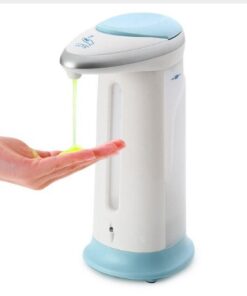 Large Capacity Automatic Soap DispenserOriginal price was: $43.00.$29.99Current price is: $29.99.
Large Capacity Automatic Soap DispenserOriginal price was: $43.00.$29.99Current price is: $29.99. -
Product on sale
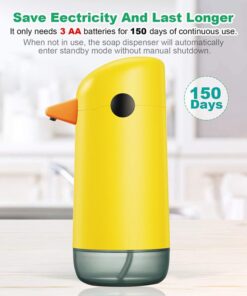 Duck Soap Dispenser – Touchfree Hygiene SolutionOriginal price was: $55.12.$29.99Current price is: $29.99.
Duck Soap Dispenser – Touchfree Hygiene SolutionOriginal price was: $55.12.$29.99Current price is: $29.99. -
Product on sale
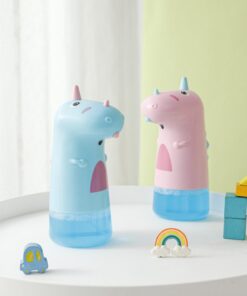 Dinosaur Soap Dispenser: Make Handwashing Fun!Original price was: $40.85.$30.85Current price is: $30.85.
Dinosaur Soap Dispenser: Make Handwashing Fun!Original price was: $40.85.$30.85Current price is: $30.85. -
Product on sale
 Touchless Foam Dispenser – Deer Style Dispenser 350mlOriginal price was: $43.00.$33.00Current price is: $33.00.
Touchless Foam Dispenser – Deer Style Dispenser 350mlOriginal price was: $43.00.$33.00Current price is: $33.00. -
Product on sale
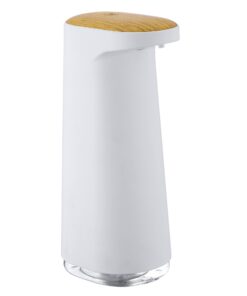 Large Liquid Soap Dispenser Auto Sensing Contactless – Large 450mlOriginal price was: $49.25.$34.99Current price is: $34.99.
Large Liquid Soap Dispenser Auto Sensing Contactless – Large 450mlOriginal price was: $49.25.$34.99Current price is: $34.99. -
Product on sale
 Farm Animal Soap Dispenser – Touchless & RechargeableOriginal price was: $69.94.$39.99Current price is: $39.99.
Farm Animal Soap Dispenser – Touchless & RechargeableOriginal price was: $69.94.$39.99Current price is: $39.99. -
Product on sale
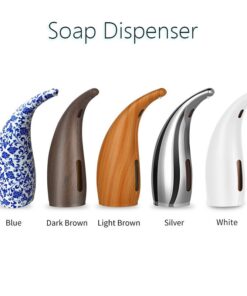 Automatic Touchless Soap Dispenser – Sleek and ClassicOriginal price was: $79.38.$39.99Current price is: $39.99.
Automatic Touchless Soap Dispenser – Sleek and ClassicOriginal price was: $79.38.$39.99Current price is: $39.99. -
Product on sale
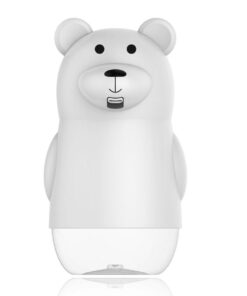 Rechargeable Soap Dispenser TouchlessOriginal price was: $67.99.$39.99Current price is: $39.99.
Rechargeable Soap Dispenser TouchlessOriginal price was: $67.99.$39.99Current price is: $39.99.
FAQ’s Types of Soap Dispensers: A Comprehensive Guide
What type of soap is compatible with most dispensers?
Most soap dispensers are designed to be compatible with liquid soap, though some can also be used with foam soap, lotion, or sanitizer. It’s important to check the manufacturer’s recommendations to ensure compatibility.
How do I maintain and clean my soap dispenser?
Regular maintenance involves refilling the dispenser before it runs out of soap completely, wiping down the exterior to remove soap residue, and occasionally flushing the pump or nozzle with warm water to prevent clogging.
Are automatic soap dispensers prone to malfunction?
Automatic soap dispensers can sometimes encounter issues like sensor malfunctions or battery depletion. However, choosing a high-quality model and maintaining it regularly can minimize these problems.
Can I use dish soap or hand sanitizer in a soap dispenser?
Yes, many dispensers are versatile and can be used with dish soap or hand sanitizer. However, using a liquid that is too thick or contains particles may cause it to clog, so it’s best to use products specifically made for dispensers.
How do I install a wall-mounted soap dispenser?
Installation typically involves securing the dispenser’s mounting bracket to the wall using screws and anchors. It’s important to ensure the dispenser is mounted at a convenient height for users and in a location that is easy to access and fill.
What should I consider when choosing a soap dispenser for my business?
For businesses, consider factors such as traffic volume, hygiene requirements, ease of maintenance, and cost. Automatic or touchless dispensers are often preferred in high-traffic areas, while manual dispensers might be more suitable for small businesses with a focus on simplicity and cost-efficiency.
Can soap dispensers help in reducing waste?
Yes, many modern dispensers, particularly automatic ones, are designed to dispense a precise amount of soap, reducing overuse and waste. This can be both cost-effective and environmentally friendly.
Are there eco-friendly soap dispensers available?
Eco-friendly options include manual dispensers made from sustainable materials, as well as models that do not require batteries or electricity. Additionally, some companies offer refillable dispensers that can be paired with eco-friendly soap products.
References
GOJO. (2023). When to select manual vs. touch-free dispensers. GOJO Industries. https://www.gojo.com/en/Newsroom/Blog/2023/When-to-Select-Manual-vs-Touch-Free-Dispensers
Ophardt Hygiene. (2021). Manual vs. touchless hand hygiene dispenser. Ophardt Hygiene. https://news.ophardt.com/en/manual-touchless-hand-hygiene-dispenser
Vannsoo. (2025). Wall mount soap dispenser vs. countertop soap dispenser: Which is better for your space? Vannsoo. https://www.vannsoo.com/wall-mount-soap-dispenser-vs-countertop-soap-dispenser-which-is-better-for-your-space
WebstaurantStore. (n.d.). Types of soap dispensers. WebstaurantStore. https://www.webstaurantstore.com/guide/700/types-of-soap-dispensers.html


